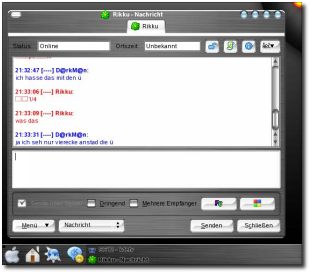A Train Which Requires a Reboot

 was travelling to London the other day and something out of the ordinary happened on the journey back to Manchester. This has me think of the possibility of a subsequent rant, which is something that I can never help doing.
was travelling to London the other day and something out of the ordinary happened on the journey back to Manchester. This has me think of the possibility of a subsequent rant, which is something that I can never help doing.
So, we were all prepared to leave Euston Rail Station, but the train got stuck. Once it was time for it to depart, the brakes could not be operated. They didn’t permit the train to move. The manager soon said that the local engineers were called in and later added that the train needs a reboot. All the lights went out and the train was virtually disabled for several minutes. Then, even after the reboot, the breaks did not work. Delays have begun to accumulate as the train remained in the station for almost half an hour longer than it should have.
Eventually, the problem was fixed and we rode to Manchester faster than usual, still to no avail (it was late). I slept the entire time fortunately, so not all was bad. The occupancy of the train was low. I couldn’t help but wonder: are these new-ish Virgin trains driven by anything from Microsoft? Windows in particular as a possibility? Or is it specialised UNIX? This reminded me of a very recent deal involving Microsoft and all the Formula 1 teams. I asked somebody who might know the answer, but he could only suggest the following:
“I’d kind of doubt that they’d have windows, but it is just possible. I’d suggest you contact virgin to find out. If it’s true, it could well be a serious safety hazard which should be highlighted anyway.
Personally, I’ve truly no idea…”
Eventually, I decided to contact the company and find out. I doubt Virgin would even reply to any such as enquiry. If they use Windows, they’ll probably deny it. Nobody wants their train systems hijacked, using the flaw du jour, right?






 Filed under:
Filed under:  IET is a tricky thing. It’s harder to commit to it than it is to decide to get it started. I still believe in controlling one’s diet by supervising ‘fridge inventories’. It’s essentially done by abstaining from buying undesirable foods or sharing food with others too openly. Shared fridges are a disaster, speaking from experience, as you are no longer restricted to a narrow range of foods (variety is good on the other hand). I find that avoiding the temptation at the stage of purchase leads to a more balanced diet at the end of the day. This expands beyond the ‘realms’ of the fridge. Also dried and long-enduring foods fit this argument. Even sugary drinks and alcohol.
IET is a tricky thing. It’s harder to commit to it than it is to decide to get it started. I still believe in controlling one’s diet by supervising ‘fridge inventories’. It’s essentially done by abstaining from buying undesirable foods or sharing food with others too openly. Shared fridges are a disaster, speaking from experience, as you are no longer restricted to a narrow range of foods (variety is good on the other hand). I find that avoiding the temptation at the stage of purchase leads to a more balanced diet at the end of the day. This expands beyond the ‘realms’ of the fridge. Also dried and long-enduring foods fit this argument. Even sugary drinks and alcohol.


 E often face the need to compromise and rearrange priorities. We do so in order make better use of our time, but there are trade-offs involved. A few months ago I said I would
E often face the need to compromise and rearrange priorities. We do so in order make better use of our time, but there are trade-offs involved. A few months ago I said I would 
